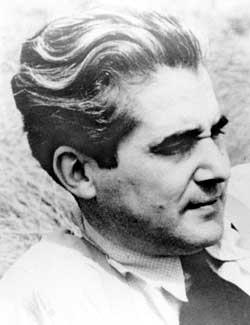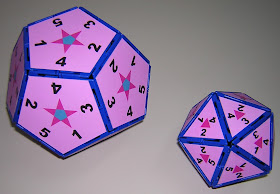
Sunday, February 28, 2010
Sinais de fogo os homens se despedem...
(...) E, de repente, ouvi dentro da minha cabeça uma frase: «Sinais de fogo as almas se despedem, tranquilas e caladas, destas cinzas frias.» Olhei em volta. De onde viera aquilo? Quem me dissera aquilo? Que sentido tinha aquela frase? Tentei repeti-la para mim mesmo: «Sinais de fogo...» Mas esquecera-me do resto. Com esforço, reconstituía a sequência: «Sinais de fogo os homens se despedem, exaustos e espantados, quando a noite da morte desce fria sobre o mar.» Não tinha sido aquilo. Não era aquilo. E que significava? Seriam versos? Repeti mentalmente: «Sinais de cinza os homens se despedem, lançando ao mar os barcos desta vida.» Novamente as palavras eram outras, ou quase as mesmas mas diversamente. Tirei um papel do bolso, e escrevi: «Sinais de fogo os homens se despedem, lançando ao mar os barcos desta vida.» Reli o que escrevera. E depois? Olhei o mar que escurecia, com manchas claras que ondulavam largas. Os barcos iam pelo mar fora, e nalguns havia lanternas acesas. «Nas vastas águas...» Nas vastas águas... Era absurdo. Eu fazendo versos? Porquê? Amarrotei o papel e deitei-o fora. Mal amarrotado, ele foi descendo num voo balanceante, até que pousou numa rocha. Aí, vacilou, aquietou-se, e, numa reviravolta súbita, deixou-se cair para o meio das pedras e sumiu. Era quase noite escura. Voltei para a cidade.
Saturday, February 27, 2010
Friday, February 26, 2010
Thursday, February 25, 2010
Wednesday, February 24, 2010
Tuesday, February 23, 2010
"O verdadeiro poeta era ele" - um texto de José Gomes Ferreira sobre Bento de Jesus Caraça


JOSÉ GOMES FERREIRA:
“O verdadeiro poeta era ele”
O adjectivo fascinante, embora já com o brilho muito gasto de tanto uso desatento, ainda me parece ser o mais próprio para definir a personalidade de Bento Caraça.
Camponês mal escondido no quotidiano da cidade, lábios estreitos para tornar as palavras voluntárias, sempre que encontrava alguém de quem gostava, lançava para o mundo a ponte do seu sorriso inteligente - e saudava-me:
- Olá, poeta!
Entre nós havia esse pacto de convívio. Ambos representávamos - actores provisórios do Eterno Diálogo das duas linguagens, tão desiguais por fora, mas afinal tão misteriosamente enlaçadas: a matemática e a poesia.
Eu simulava o poeta anarquista, refilão, desordeiro, imprecador. Ele, o homem que se fingia pasmado com a minha fantasia à solta.
Para isso bastava-me repetir as brincadeiras do costume, algumas - vamos lá - bem pouco originais. Descrevia-lhe, com pormenores de ocasião, as minhas invenções mais recentes: a máquina de fabricar angústia, as bigornas de prata irreal onde se forjavam estrelas para substituir as que iam secando no céu, os Altos Fornos de fundir coisa nenhuma…
- Oh! este poeta! Este poeta!
E ria, feliz por haver imaginação no mundo, arte, música, poetas desordenadores da vida parva…
Mas quando nos separávamos - coisa curiosa - eu sentia que o verdadeiro poeta era ele. Aquele homem superior onde sempre encontrei apenas um único desejo de missão: o de viver como se cumprisse um acto poético.
E cumpriu.
---
(publicado na Seara Nova, nº 1472, Junho de 1968)
Monday, February 22, 2010
Desenhos / Sketches (5)
Vê-se o puzzle Icosaedro (2) / One can see Icosahedron (2) puzzle
Ver / see:
"Jogos com poliedros e permutações"
"Jogos com poliedros e permutações"
"Puzzles with polyhedra and permutation groups"
"Puzzles with polyhedra and permutation groups"
Puzzles with polyhedra and numbers (pages 103-131)
"Jogos com poliedros e permutações"
"Jogos com poliedros e permutações"
"Puzzles with polyhedra and permutation groups"
"Puzzles with polyhedra and permutation groups"
Puzzles with polyhedra and numbers (pages 103-131)
***
Sunday, February 21, 2010
Algumas ligações ("links")
Passionné de Math ? Faites des Puzzles avec des polyèdres (http://www.capcampus.com/)
***
Puzzles with Polyhedra and Permutation Groups — The Gateway to 21st Century Skills
Three Puzzles with Polyhedra and Numbers — The Gateway to 21st Century Skills
On the Puzzles with Polyhedra and Numbers — The Gateway to 21st Century Skills
***
TKI - TKI - Full Record for Resource 28419 (Nova Zelândia, em MĀORI...)
***
Les Archives des énigmes
***
[Le portail des IREM] Puzzles avec des polyèdres et des nombres
***
NOE Education
***
Mathematics Links from Matrix Editions
***
About "On the Puzzles with polyhedra and numbers" (mathforum.org)
***
Puzzles with Polyhedra and Permutation Groups — The Gateway to 21st Century Skills
Three Puzzles with Polyhedra and Numbers — The Gateway to 21st Century Skills
On the Puzzles with Polyhedra and Numbers — The Gateway to 21st Century Skills
***
TKI - TKI - Full Record for Resource 28419 (Nova Zelândia, em MĀORI...)
***
Les Archives des énigmes
***
[Le portail des IREM] Puzzles avec des polyèdres et des nombres
***
NOE Education
***
Mathematics Links from Matrix Editions
***
About "On the Puzzles with polyhedra and numbers" (mathforum.org)
Saturday, February 20, 2010
Friday, February 19, 2010
Thursday, February 18, 2010
Wednesday, February 17, 2010
Questo grandissimo libro (...) è scritto in lingua matematica...
«La filosofia è scritta in questo grandissimo libro che continuamente ci sta aperto innanzi a gli occhi (io dico l'universo), ma non si può intendere se prima non s'impara a intender la lingua, e conoscer i caratteri, ne' quali è scritto. Egli è scritto in lingua matematica, e i caratteri son triangoli, cerchi, ed altre figure geometriche, senza i quali mezzi è impossibile a intenderne umanamente parola; senza questi è un aggirarsi vanamente per un oscuro laberinto.»
(Galileo Galilei, Il Saggiatore, Cap. VI)
(Galileo Galilei, Il Saggiatore, Cap. VI)
Tuesday, February 16, 2010
Desenhos / Sketches (1)
***
A figura mostra, entre outros, o puzzle dodecaedro (1) e as suas três classes de equivalência.
Figure shows, among other puzzles, the dodecahedron (1) puzzle and its three equivalence classes.
Ver / see:
Puzzles with polyhedra and numbers (pages 103-131)
Monday, February 15, 2010
Saturday, February 13, 2010
Boris Vian e a matemática
 Na fotografia: Sartre e Boris Vian
Na fotografia: Sartre e Boris Vian ***
"É muito bonito, é extremamente conhecido e extremamente comum dizer em francês, dizer com orgulho: 'Eu não percebo nada de matemática.' Pessoalmente, faço a seguinte reflexão: 'Se não percebesse nada de matemática teria vergonha de dizê-lo.' Apresentar-se assim de repente como um imbecil não é a melhor maneira de se apresentar."Thursday, February 11, 2010
Wednesday, February 10, 2010
Tuesday, February 09, 2010
Monday, February 08, 2010
Thursday, February 04, 2010
Quatro patentes no Reino Unido / Four United Kingdom Patents
****
Aqui: espacenet
As quatro patentes:
GB2454535: Download
GB2454536: Download
GB2454537: Download
GB2454538: Download
Ver ainda:
Intellectual Property Office: 9 (as duas últimas entradas) 10 (as duas primeiras entradas)
As quatro patentes:
GB2454535: Download
GB2454536: Download
GB2454537: Download
GB2454538: Download
Ver ainda:
Intellectual Property Office: 9 (as duas últimas entradas) 10 (as duas primeiras entradas)
***
Excertos dos textos das patentes:
«As means of introducing the key aspects covered by this invention consider Microsoft Corporation’s computer-based puzzle game Tetravex and the mathematical work of Jorge Rezende, University of Lisbon.
(...)
The mathematical work of Jorge Rezende has been published in the papers entitled “On the Puzzles with Polyhedra and Numbers” and “Puzzles with Polyhedra and Permutation Groups”, available via the web site of the Mathematical Group of the University of Lisbon (http://gfm.cii.fc.ul.pt/people/jrezende/pt/?set_language=pt). The publications cover the mathematical methods behind using polygonal plates (tiles), with numerical indicia ascríbed to each edge, to form the surface of regular polyhedron. Although the analysis is very detailed and covers a method (effectively a search based routine) that determines how many solutions a particular indicia set can produce, i.e. how many different ways the tiles can be arranged to form the surface of the polyhedron by matching adjacent indicia of different tiles, there is no discussion on limiting the allocation of the indicia to ensure an unique solution.»
(...)
The mathematical work of Jorge Rezende has been published in the papers entitled “On the Puzzles with Polyhedra and Numbers” and “Puzzles with Polyhedra and Permutation Groups”, available via the web site of the Mathematical Group of the University of Lisbon (http://gfm.cii.fc.ul.pt/people/jrezende/pt/?set_language=pt). The publications cover the mathematical methods behind using polygonal plates (tiles), with numerical indicia ascríbed to each edge, to form the surface of regular polyhedron. Although the analysis is very detailed and covers a method (effectively a search based routine) that determines how many solutions a particular indicia set can produce, i.e. how many different ways the tiles can be arranged to form the surface of the polyhedron by matching adjacent indicia of different tiles, there is no discussion on limiting the allocation of the indicia to ensure an unique solution.»



























